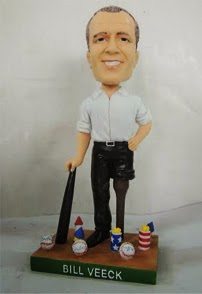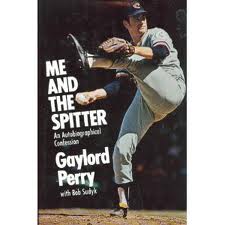Roland Hemond should write the Hall of Fame plaques. I asked him about his one-time boss, Chicago White Sox team owner Bill Veeck. I’m moved by his tribute that he was so kind to share with a fan.
Bill Veeck
Talking Autographed Baseball Books With Veteran Dealer Bobby Plapinger
Baseball books have a best friend. His name is Bobby Plapinger.
Many know about good baseball titles. Bobby knows what makes a memorable autographed baseball book. I’m grateful that he shares his knowledge and experience with us in this e-interview.
Q: Any tips for getting baseball books autographed (pen to use? Get title page signed?) Who knows? Readers may be contacting you with their recently-signed books to buy?
A: This is really a matter of personal preference. Mine is to have the signer use an ink pen – black or blue – & sign the front flyleaf – the 1st blank page, or the title page.
If it’s someone I know – or have met – I just tell them to do it however they want to.
I like ink better than sharpie because it just seems clearer to me – also, the pen tends to make very fine indentations into the paper, which can help for future identification purposes.
Some people like “personalizations” others don’t. I tend to prefer a “straight signature” unless the signer is an aquaintance of some kind – but I don’t make a big stink about this either. If someone wants to write “To Bobby…” or the like, I don’t protest.
And… of course a personalized signature is less likely to be forged & thus can be good proof of authenticity if & when that’s required.
The one thing I think you should AVOID at all costs, is having the dust jacket or cover, of the book signed. While it can be easy to display, they’re subject to damage from moisture, light or worse & can easily smear, smudge and/or fade. And “protecting” a dj with a signature on it – something you should do, as described above, can actually damage the signature on a signed dj. I’ve seen the ink from a sharpie or marker signature, transfer from the dj to the mylar cover – that fades & smears the original signature.
I’m always open making offers on books. Just remember, just like the guys on “Pawn Stars” (& it’s brethren & spawn…) I’m buying for resale – so chances of my paying a premium on a recently signed book are pretty small.
It’s kind of ironic – but you can buy signed books from most of the Hall of Famers who are doing shows these days for far less than an autograph ticket to have the guy sign the book at a show.
You’d like to think you could sell your signed Hank Aaron autobiography for more than the $200 – $300 you just paid to have him sign it…
You’d be hard pressed to do so.
And that means MY offer will be even less…. ALOT less….
Look at the prices in the signed book list. Figure I’d pay you approx 10%-30% of my asking price for your books, IF, I want them.
Q: Collectors get phobic about collectibles, wanting everything under glass or in plastic. DO YOU TOUCH THE ACTUAL SIGNED BOOK, one gasps?!?
Tips about displaying/preserving/enjoying an autographed book?
A: Again – this is a matter of preference. Books are remarkably hardy if you keep them dry, away from direct sunlight & relatively clean.
You want to store them on shelves. “Standing up”. You want to avoid long term storage of “stacks” of books lying on their “backs” – can lead to dj wear & tear, bumps & bruises & the like.
If you have large oversize books you can “stack” them – as long as they’re protected – on a shelf – NOT the ground.
If the shelves provide cover from dirt/dust – all the better. Use a feather or “swiffer” for dusting, cleaning.
I like to use mylar dust jacket covers – often called “Brodarts” (for the primary manufacturer – although there are a number of different brands) to protect jackets. They help defend against dust, moisture & for older jackets, prevent further deterioration of jackets that already have some age wear.
You can get “acid free museum quality” dj covers if you’re really anal – but the “standard” issue should suffice for all but the most particular.
I think the whole point of books is that they should be read. So – yes – I touch my books. But… carefully – you don’t need to wear white gloves – but you might want to make sure your hands aren’t dirty and/or sticky. Teach kids to treat books carefully, and/or keep yours away from those who are still learning.
You can, if you like, put all/some of your books in mylar bags & for some that are old and/or rare and/or fragile, this might be a good idea. But in general I think books “breathe” the environment around them & enjoy doing so – and an occasional dusting/cleaning – is more than sufficient for preserving most books in most environments.
I like to think that I treat my books – both the ones in my “personal collection” and the ones I sell – carefully and respectfully. But I once got into a big argument with a collector at a show – I write my book prices – in pencil, lightly – in the upper right corner of the front flyleaf (or 1st white page) – & this guy was outraged that I would even consider writing in such a valuable artifact. Even when I explained – demonstrated in fact – that the “writing” was easily removable & then indetectable – he insisted I was wrong to mar the books in that way.
So… as I say… It’s a matter of personal preference.
I like the look of books on a bookshelf. A whole array of “spines out” – really appeals to me. To break up the monotony I use “tchackes” – little figures, pennants, puppets, pictures etc.etc. etc. I also like to display a few favorite books “face out” – with the cover facing the room.
This takes up a little more space, but looks really nice. I think. Then again – I’m used to a bookstore where you use “face out” to entice customers to buy stuff. But I think the principle is the same.
Plus, you can, if you like, change the books you “face out” – which can really change the “look” of your room.. well…. your shelf at least.
Q: What’s your feeling about autographed bookplates?
A: I think part of the appeal of signed books is the notion that the signer actually touched – however briefly & minimally – the book.
You lose that with a bookplate. Also – bookplates lend themselves to fraud – as it’s alot easier to “practice” signatures on cheap inexpensive bookplates that take up no space, than on a pile of books.
That said – many publishers of “signed limited editions” have the signers autograph blank sheets of paper which are later bound into the books. So in those cases, the signer never touches the book & the buyer never knows the wiser..
Well… you do now.
Jerome Holtzman once told me he had “stacks” of sheets of paper signed by Bill Veeck sitting in his basement waiting for a future printing of the “Holtzman Press” “signed, leatherbound edition” of “Veeck As In Wreck” which never materialized.
In spite of my general dislike for signed bookplates, I guess there could be exceptions – if you have custom bookplates & every “signed book” has one in them, that could be kind of cool. I always thought it would be neat to mount signed baseball cards of a player inside his biography/autobiography. In the days of common “by mail” signings, it was a lot easier and cheaper to send cards through the mail than books – not to mention the risk of potential damage in shipping to the book.
I never followed through on this plan – but I still think a library full of “signed” books w. the signatures on attractive bb cards – would be a pretty neat one.
Q: Tell the readers how to get your autographed baseball book sales list by e-mail.
Send me an e-mail at baseballbooks@opendoor.com
and I’ll send you the list. I generally just “paste” it in to the e-mail. If you’re mailing from work, make sure to add that address to your “address book” or else it will just get bounced back to me because corporations hate little, local ISP like “OpenDoor.com” .
I can also attach a PDF of the Spring/Summer Baseball Catalog which lists the majority of my current inventory.
I welcome questions and/or comments about signed books – or anything else you think I can help with. I don’t “social network” but I always answer e-mails & occasionally speak on the phone.
Coming Monday: A troubling headline for autograph collectors
Reading Between the Lines of An Autographed Baseball Book
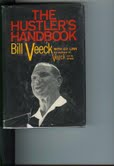
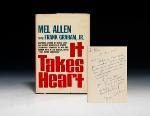
Bobby Plapinger is one of America’s foremost names to baseball book collectors.
As “R. Plapinger Baseball Books,” he’s become an adored author in his own
league. Look at his sale catalog, and you’ll see his mini-reviews are
penned by a grateful, learned fan of the game.
I asked BP (no, not THAT B.P.) what noted autographs he’s discovered in
his years as a bookologist. He offered two juicy tales:
“The first starts in 1989 – probably in the Spring. I was on my annual trip to New York to visit family… and… of course … the Strand bookstore.
By pure chance, I arrived in the Strand’s Rare Book Room on the day they
were unpacking books from Bob Fishel’s estate.I recognized the name Fishel, but wasn’t well acquainted with him. I did,
however, “know” alot of his books & purchased quite a few of them – many
inscribed to Fishel by the authors.When I got the books home & had a chance to carefully inspect them, I learned a little more about Bob Fishel.
Turns out he’d started out working for Veeck & the St. Louis Browns – he was
the guy who “found” Eddie Gaedel.After the Browns, Fishel worked for the Yankees for a long time, before
finally ending up in the American League office. The annual award given to
baseball publicists is named after him.It was clear from many of the inscriptions that “baseball people” considered
Fishel not only to be a friend & colleague, but a beloved one.A copy of Bill Veeck’s “sequel” to his autobiography (“Veeck as In Wreck”) –
“The Hustler’s Handbook”, had a page long inscription in Veeck’s handwriting
that read, in part, “To Bob… It’s almost impossible to … explain how
much you’ve meant.. to us”.In the copy of his “It Takes Heart” which he gave to Fishel, Mel Allen wrote
“To Bob, It has been said: ‘What we have done for ourselves alone dies with
us, what we have done for others in the world remains and is immortal.’ To
me, Bob, you are immortal. I am sincerely grateful for your warm friendship.
Mel Allen.”Other inscriptions from other authors were similarly heartfelt, but these
two, in particular, struck me as almost transcending “inscriptions in a
book”. To me, they were almost like letters from the authors, testifying to
the strong feelings they had for their close colleague and friend.”
At press time, Bauman Rare Books was selling the Mel Allen signed edition for $800.
Friends of this blog need to email Bob at baseballbooks@opendoor.com Tell Bob that “Baseball By The Letters” sent you. Ask for his latest catalog, which he’ll send as a PDF.
Tomorrow: The intriguing untold story of a baseball book’s wink-and-nod inscription.
Mike Veeck Goes Beyond Disco Demolition
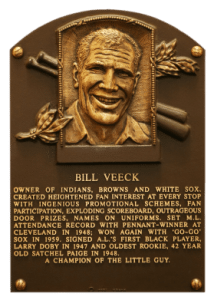
Yes, it’s tempting. But it’s been done.
Who doesn’t want to ask one MORE “Shot Heard Round The World” question of Bobby Thomson? The same holds true for Mike Veeck and Disco Demolition.
Mike has discussed his day of infamy from July, 1979. He’s a good sport who relives the promotion in countless interviews. One enterprising collector even hit the TTM jackpot, getting Veeck to autograph a baseball in which he recounted the highlights and lowlights of the idea gone haywire.
But Veeck worked as director of marketing for the team and his Hall of Fame father Bill Veeck for more than one game. Read Veeck–As In Wreck: The Autobiography of Bill Veeck or The Hustler’s Handbook
to fully appreciate the passionate creativity of this baseball-loving maverick.
What else does Mike remember about the “Veeck and Veeck” days of the 1970s White Sox?
Mike Veeck replied:
“We invented suites on the South Side. Harry (Caray) started singing ‘Take Me Out to the Ballgame.’
“Both have their pluses and minuses.
Thanks for making me think.
See you in the bleachers.
Mike Veeck”
Mike Veeck, Baseball’s King of Fun, Reveals His Inspirational Teammate
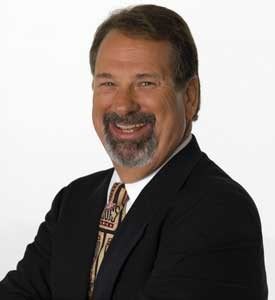
Whenever I get a letter from a former Browns, Indians or White Sox player, they mention two Veecks: team owner Bill and his wife Mary Frances. Appreciating players and fans became a Veeck family affair.
I wrote to Mike Veeck, sharing this insight. I feel that the plaque in the Hall of Fame was earned by two people, not one. Did he find the same sources of inspiration in his leadership of the St. Paul Saints and three other minor league teams? Does his wife Libby offer the same support? Could you find Mike in the stands, just like his father?
Mike Veeck wrote:
Thank you for the kind note and the opportunity to talk about my favorite person…Libby. She collects art, and as a result, all of the decorations at Midway (and the other parks) have been influenced by her love of the visual. I even write commercials that are visibly different from my “pre-Lib” days. If she doesn’t laugh, we don’t use it.
I spend a lot of time in the stands and at the gate. If you make EVERY decision with the people who come to your parks’ best interest, you can’t go wrong. Fans know much more about your product than you do — or in this case, than I do.”
I believe in Mike Veeck. I think his upbeat philosophy, captured in the delightful book Fun is Good, could transform Major League Baseball and other stodgy, sluggish sectors of society.
Tomorrow: go beyond Disco Demolition, and find out any other White Sox highlights Veeck savors from working for his Dad.

